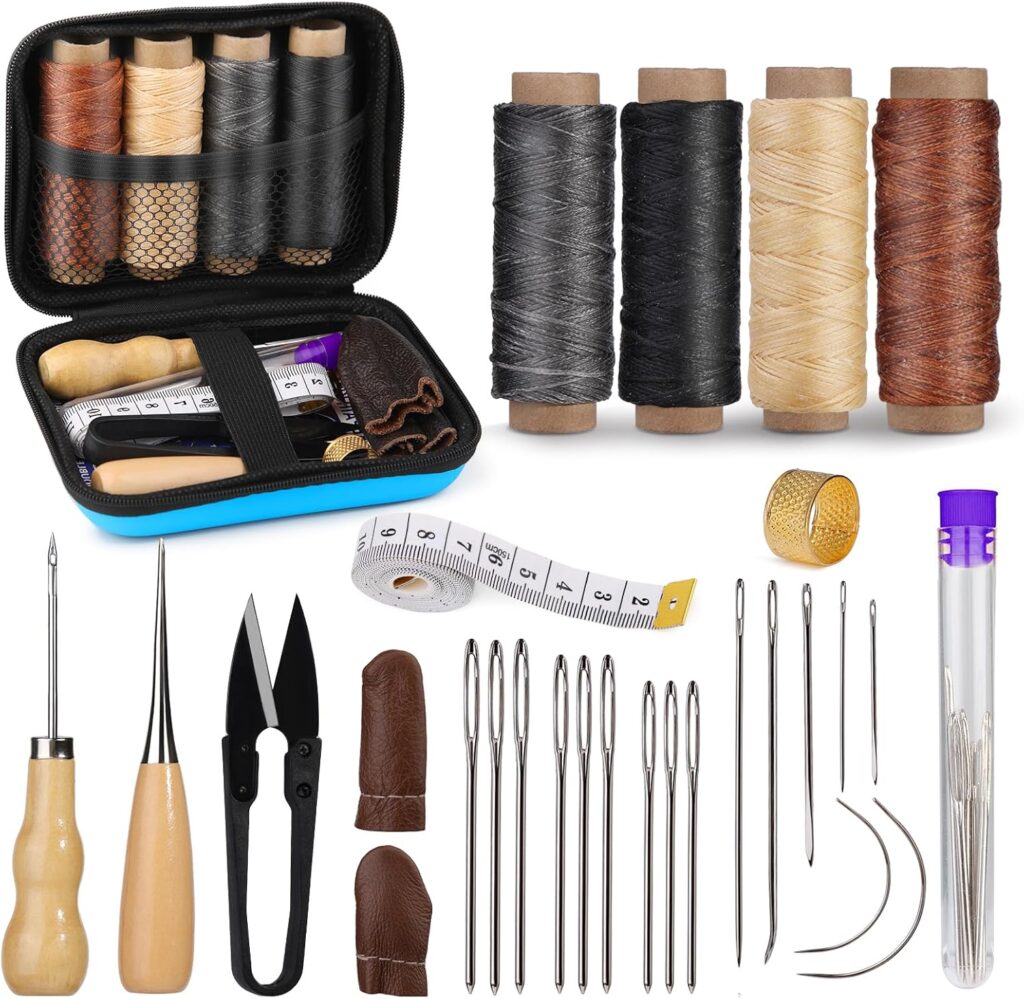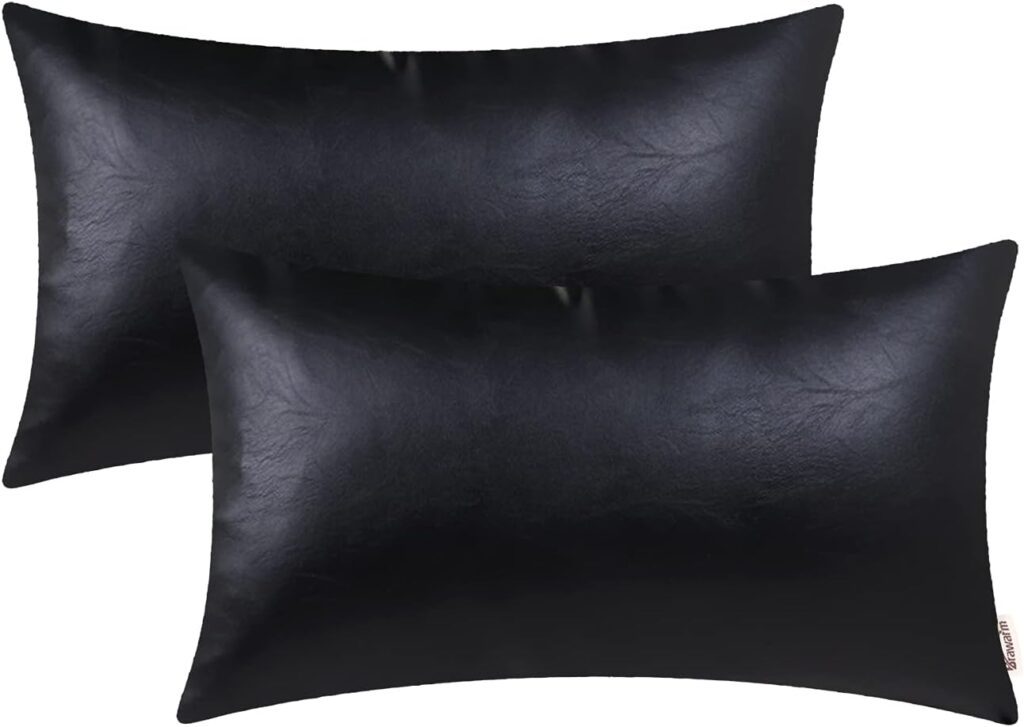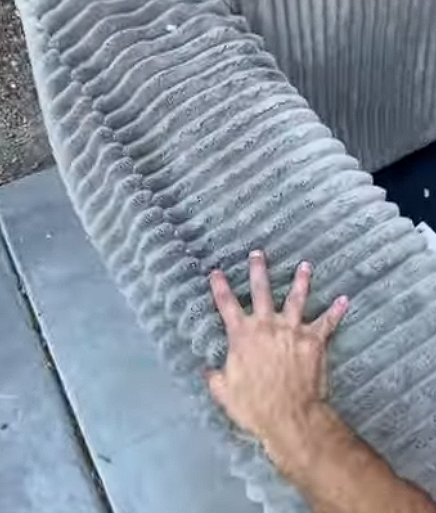The Appeal and Importance of Leather Care
Leather furniture is a timeless choice for many homes, adding an air of elegance and luxury to any room.
Beyond its visual appeal, leather is highly durable, making it a long-lasting option for those looking to invest in high-quality upholstery. With the right care, leather can maintain its soft texture and rich look for decades.
However, without proper upkeep, leather can quickly lose its shine, becoming dry, cracked, or discolored. Dust, spills, and sunlight are some of the common culprits that can degrade leather over time.
Regular maintenance is essential to preserve both the beauty and integrity of your leather furniture. By developing a simple care routine, you can keep your leather looking and feeling new for years to come.
Understanding Leather Upholstery: Types and Special Care Needs
Leather upholstery comes in several varieties, each with its own characteristics and care requirements.
Full-grain leather is the most durable and high-quality option, known for its natural imperfections and rich patina that develops over time. Top-grain leather is slightly more processed, offering a smoother appearance while still being strong and resistant to wear.
Faux leather, while more affordable, doesn’t age like natural leather and may require different care to prevent cracking and peeling.
Why Leather Needs Special Attention Compared to Fabric Upholstery
Leather’s porous nature makes it more sensitive to environmental factors like sunlight, heat, and humidity, which can lead to fading, cracking, or drying out.
Unlike fabric, which can often be machine-washed or easily spot-cleaned, leather requires a specific regimen of cleaning and conditioning to maintain its natural oils and texture.
Leather also absorbs body oils and dirt, which can discolor it over time if not properly maintained.
By using appropriate cleaning products and techniques, you can prevent these issues and preserve the unique beauty of your leather upholstery.
Regular Cleaning Routine: Preserving Leather’s Beauty
Dust and dirt can settle into the grain of leather, dulling its natural shine and leading to wear over time.
Weekly dusting and wiping are essential steps to keep your leather furniture looking fresh and prevent buildup that could damage the surface.
Using a soft, dry cloth or a microfiber duster helps remove particles without scratching the leather.
The Right Cleaning Solutions for Leather
When it comes to cleaning leather, it’s important to use mild solutions that won’t strip away its natural oils.
A mixture of mild soap and water can work for light cleaning, but for best results, use a leather-specific cleaner designed to nourish and protect the material.
Avoid harsh chemicals like bleach or ammonia, which can damage the leather’s finish and cause cracking or discoloration.
Safe Cleaning Practices to Protect Your Leather
To safely clean leather, start by gently wiping down the surface with a damp cloth, making sure not to oversaturate the material with water.
Work in small sections, using circular motions to avoid streaks and uneven wear.
After cleaning, allow the leather to air dry naturally, away from direct heat or sunlight.
Finish by applying a leather conditioner to restore moisture and keep the leather soft and supple. This routine will help maintain your leather’s appearance and durability over time.
Conditioning Leather to Prevent Cracking: The Key to Longevity
Leather is a natural material that can dry out over time due to loss of moisture and exposure to heat, sunlight, and air conditioning.
Without proper care, this drying process can lead to cracks, making your leather upholstery look aged and damaged.
The natural oils in leather need to be replenished regularly to maintain its softness, flexibility, and resilience.
How Often Should You Condition Leather?
The frequency of conditioning your leather furniture depends on the environment and how often the furniture is used.
A good rule of thumb is to condition your leather every 6 to 12 months for regular use.
However, if your leather is exposed to more wear and tear or sits in direct sunlight, more frequent conditioning (every 3-6 months) may be necessary to prevent it from drying out too quickly.
Regular conditioning not only prevents cracking but also extends the lifespan of your upholstery.
Best Practices for Applying Leather Conditioner
When applying leather conditioner, it’s important to work in small sections to ensure even coverage.
Use a soft cloth and apply the conditioner in circular motions to help it absorb into the leather. Start with a small amount, as over-application can make the leather sticky or greasy.
Let the conditioner sit for a few minutes to penetrate, then gently buff the surface with a clean cloth to remove any excess.
Conditioning your leather this way will keep it hydrated and looking new for years.
Avoiding Common Damage Causes: Protecting Leather from Environmental Factors
Direct sunlight is one of the most harmful elements for leather upholstery.
Prolonged exposure to UV rays can cause leather to fade, lose its vibrant color, and dry out, leading to cracks and stiffness.
To prevent this, position your furniture away from windows or use UV-blocking curtains or blinds to shield it from the sun’s rays.
Regular conditioning can also help minimize the drying effects of UV exposure.
Keeping Leather Away from Heat Sources
Heat sources like radiators, heaters, and fireplaces can quickly dry out leather, causing it to become brittle and crack over time.
It’s important to keep your leather furniture at least a few feet away from these heat sources to prevent heat damage.
Sudden changes in temperature can also cause leather to warp or lose its shape, so maintaining a stable environment is key to preserving your upholstery’s condition.
If it’s impossible to move your leather furniture, you may just want to condition your leather furniture a little more than usual.
Preventing Stains: The Importance of Immediate Cleanup
Leather can be prone to stains from spills, which may penetrate the surface if not addressed immediately.
The best way to prevent lasting damage is to clean up spills as soon as they happen.
Use a soft, absorbent cloth to blot the spill (avoid rubbing) and follow up with a leather-safe cleaner if necessary.
Quick action helps prevent liquids from soaking into the leather and causing discoloration or water marks, keeping your upholstery in pristine condition.
Using Protective Covers or Treatments: Enhancing Leather Durability
Leather protectant sprays are a great way to shield your upholstery from daily wear and tear.
These sprays create an invisible barrier that helps repel dirt, moisture, and oils, making it easier to clean spills and preventing them from seeping into the leather.
Protectant sprays can also reduce the risk of stains and protect against fading caused by UV rays.
However, it’s important to choose a product specifically designed for leather and to test it on a small, inconspicuous area first to ensure it doesn’t alter the color or texture.
Choosing Covers for High-Use Areas: Practical Solutions for Armrests and Seats
High-use areas like armrests and seats tend to wear out faster, especially in busy households or environments with frequent visitors.
Leather covers or slipcovers can be an effective way to protect these vulnerable spots without compromising style.
When selecting covers, opt for materials that are breathable and soft to avoid trapping moisture, which can damage leather over time.
Look for covers that fit snugly to avoid slipping or shifting during use, and ensure they are easy to remove for regular cleaning.
Custom-fitted leather covers are another option, providing a seamless look while safeguarding your furniture.
Temporary Covers for Pets and Kids: Using Throws or Blankets
For households with pets or young children, temporary covers like throws or blankets offer a flexible and stylish way to protect leather upholstery from scratches, spills, and messes.
Throws made from durable, machine-washable fabrics can be easily placed over the furniture during high-activity periods and removed when not needed.
They help shield leather from pet claws, food spills, or accidental markings from kids’ activities, extending the life of your upholstery.
Choose blankets that complement your décor while providing functional protection, and make sure to shake them out or wash them regularly to keep both your furniture and cover clean and fresh.
Handling Scratches and Scuffs: Restoring Your Leather’s Flawless Finish
Minor scratches are common on leather upholstery, especially in high-traffic areas, but they can often be buffed out with the right technique.
For light scratches, using a soft cloth and a small amount of leather polish or leather oil can work wonders. Gently rub the affected area in a circular motion, which can help redistribute the leather’s natural oils and reduce the visibility of the scratch.
Be sure to use a polish that matches the color and type of your leather to maintain consistency in appearance.
Using Leather Repair Kits for More Severe Damage
For deeper scratches or scuffs that penetrate the surface, a leather repair kit may be necessary. These kits typically include fillers, color compounds, and tools designed to restore leather’s smooth texture.
First, clean the area thoroughly to remove dirt and oils, then apply the filler to the scratch or scuff, smoothing it out to match the surrounding leather.
After allowing the filler to dry, apply the color compound to blend the repair seamlessly.
While repair kits can’t always achieve a perfect match, they are an effective solution for reducing the appearance of major damage without having to replace the entire piece of upholstery.
Knowing When to Seek Professional Upholstery Repair Services
While DIY methods can be effective for minor damage, professional upholstery repair may be necessary for more significant issues like large tears, severe cracking, or deep discoloration.
Leather specialists have the tools, expertise, and materials to perform intricate repairs that restore your furniture to near-original condition.
Professionals can also re-dye leather to address widespread fading or discoloration.
If the damage extends beyond superficial scuffs and scratches, or if you are unsure of how to properly handle the repair, seeking expert help is the best way to ensure your leather furniture remains beautiful and functional for years to come.
Rotating Cushions to Prevent Uneven Wear: A Simple Strategy for Longevity
One of the easiest ways to maintain the appearance of your leather upholstery is by regularly rotating seat cushions (if possible).
Over time, certain spots, especially those that are used more frequently, can begin to show signs of wear such as sagging or discoloration.
By rotating the cushions every few weeks, you help distribute the pressure more evenly across the surface of the leather, preventing one area from bearing all the weight.
This method is similar to rotating the tires in your car.
This simple practice not only keeps the upholstery looking uniform but also extends the life of the cushions themselves by allowing them to wear more evenly.
If your cushions do start to sag over time, you can always take the furniture to an upholstery shop and they can add life to your cushions without damaging the leather. Even if they are attached.
Avoiding Overuse of One Spot: Protecting High-Traffic Areas
Frequent use of the same spot on your leather furniture can lead to more rapid wear and tear.
Armchairs, recliners, or a favorite spot on the sofa can begin to show signs of fading, creasing, or even cracking if consistently overused. To avoid this, try alternating seating arrangements and encourage family members to switch spots occasionally.
For sectional sofas, consider rearranging the components if possible, so no one section experiences too much use.
This habit helps reduce stress on any one area and keeps the entire piece looking fresh.
Prolonging Leather Upholstery Life by Managing Daily Use
To further prolong the life of your leather upholstery, pay attention to how often specific seats or cushions are used and take steps to minimize strain.
For example, placing additional padding or using throw pillows can help distribute weight more evenly, reducing the pressure placed on the leather.
Additionally, regularly fluffing and rotating cushions ensures they retain their shape and resilience over time.
Managing the daily use of your furniture in this way helps maintain its structure and prevents premature wear, keeping your leather upholstery in excellent condition for years.
Professional Maintenance: Knowing When to Call in the Experts
While regular care and upkeep can do wonders for your leather upholstery, there are times when hiring a professional is the best option.
If your leather has deep stains, significant fading, or extensive wear, a professional cleaner can provide deep cleaning and restoration that is beyond standard DIY methods.
Professionals have access to specialized tools, products, and techniques that can rejuvenate the leather’s appearance without causing damage.
Additionally, if you’ve encountered issues like tears, large scratches, or other forms of severe damage, it’s wise to consult an expert who can properly assess and repair the problem, ensuring a seamless restoration.
How to Find Reputable Leather Upholstery Care Specialists
Finding a reliable leather upholstery care specialist is crucial to maintaining the integrity of your furniture.
Start by seeking recommendations from friends, family, or online communities who have used professional services in your area. Online reviews and ratings can provide insight into the experiences of previous clients, helping you gauge the quality of service provided.
Look for specialists who offer a range of services, including cleaning, conditioning, and repair, as this indicates a well-rounded expertise in leather care.
It’s also a good idea to inquire about their experience and the types of products they use, ensuring they are knowledgeable about the specific care requirements of leather upholstery.
Don’t hesitate to request quotes or consultations to find a service that fits your needs and budget while ensuring your leather remains in excellent condition.
Recapping Essential Tips for Leather Upholstery Care
Maintaining the beauty and longevity of your leather upholstery requires a multifaceted approach.
Regular cleaning is crucial to remove dust and dirt that can accumulate and damage the leather.
Conditioning your leather every few months helps prevent drying and cracking, ensuring it remains supple and vibrant. Additionally, protecting your furniture from direct sunlight and heat sources is vital in preserving its color and texture.
Rotating cushions and reducing wear by avoiding overuse of specific areas can significantly prolong the life of your leather items.
Finally, knowing when to seek professional maintenance can help address issues that go beyond simple care, ensuring your furniture looks its best for years to come.
Encouraging Routine Maintenance for Lasting Beauty
By developing a consistent routine for caring for your leather upholstery, you can significantly enhance its appearance and durability.
Set aside time each week for light cleaning and incorporate conditioning into your maintenance schedule every few months. Be proactive in protecting your leather from environmental factors and wear by using leather slip covers or blankets and rotating cushions.
With a little attention and care, you can keep your leather furniture looking new, elegant, and inviting.
Remember, the investment you make in maintaining your leather will pay off in the long run, allowing you to enjoy its beauty and comfort for many years.


























